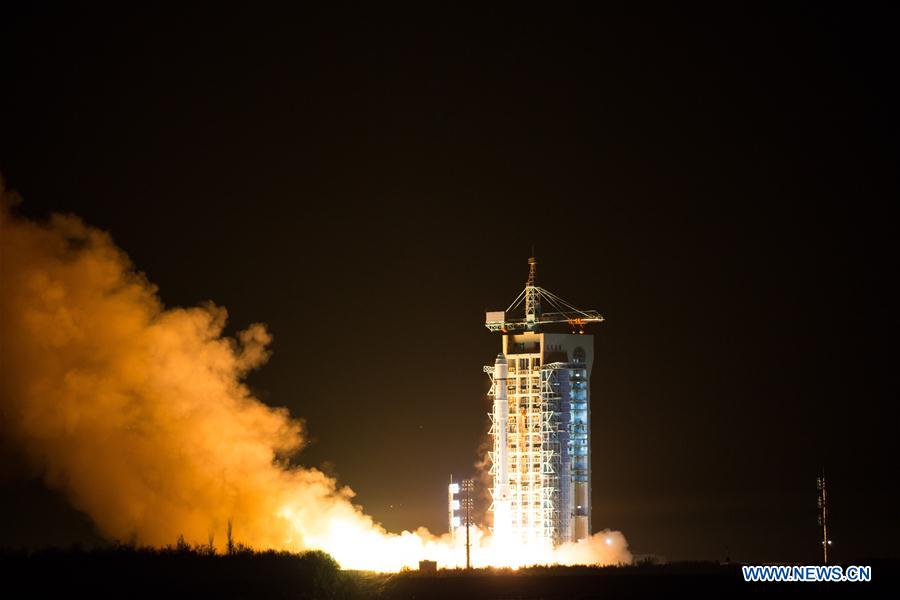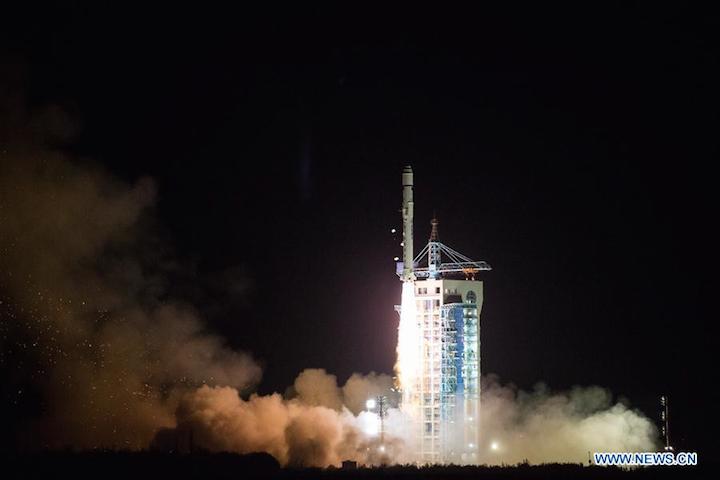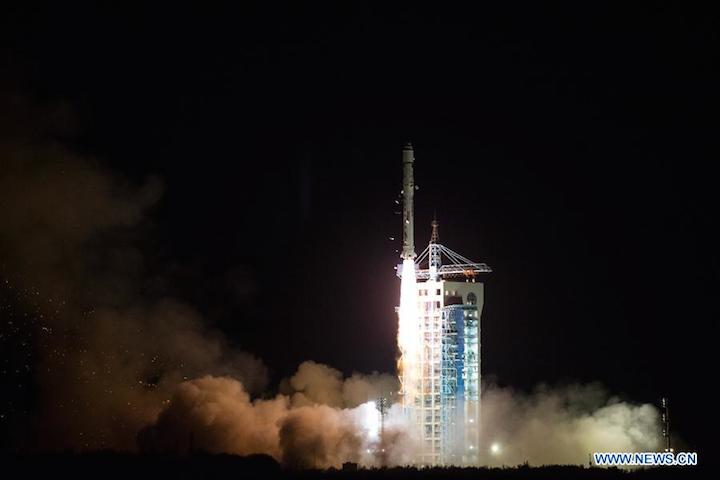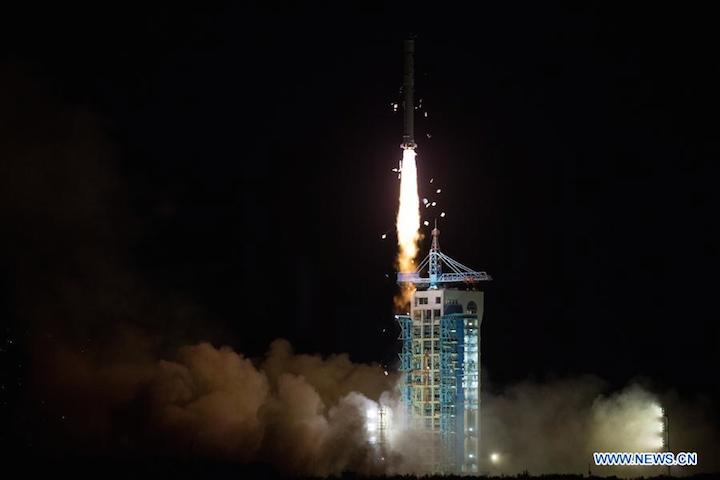.
19.12.2016
China will next week launch its first carbon monitoring satellite, TanSat, to help improve understanding of global CO2distribution, its role in the carbon cycle and contribution to climate change, and track efforts to curb greenhouse gas emissions.
Named TanSat, as 'tan' is the Chinese word for carbon, the satellite is set to launch on a two-stage hypergolic Long March 2D carrier rocket from the Jiuquan Satellite Launch Centre in the Gobi Desert.
Launch time is currently unconfirmed, but expected around 19:15 UTC on December 21, or 03:15 December 22 local time.
The 620kg satellite will enter a 700km altitude Sun-synchronous orbit, where it is expected to operate for at least three years, with a revisit time of 16 days.
Tansat carries two main instruments: a high-resolution Carbon Dioxide Spectrometer for measuring the near-infrared absorption by CO2, and a Cloud and Aerosol Polarimetry Imager (CAPI) to compensate the CO2 measurement errors by high-resolution measurement of cloud and aerosol.

Above: TanSat payloads undergoing testing (CIOMP).
Funded by the Ministry of Science and Technology (MOST) and implemented by the Chinese Academy of Sciences (CAS), the mission involves collecting data on global CO2 emissions to aid China in energy conservation and emission reduction and assist verification.
Under the Paris climate deal agreed in December 2015 and ratified by China in September, the country has pledged to peak CO2 emissions by 2030 or earlier, and reduce CO2emissions per unit of GDP by 60 to 65 percent from 2005 levels over the same time.
From the beginning of the industrial age, the atmospheric concentration of CO2 has increased from about 280 parts per million to over 400 ppm.
China is now the largest annual emitter of greenhouse gases (GHGs), and its cities are often afflicted by heavy smog. The United States remains the largest historical contributor to global GHG emissions.
According to the Changchun Institute of Optics, Fine Mechanics and Physics (CIOMP) under CAS, which developed the instruments, the CO2 detector will use optical remote sensing technology to examine the concentration of CO2 and other greenhouse gases in the air, while the atmospheric particulate matter sensor will analyse cloud and particulate matter to support the calculation of CO2 distribution.
Above: TanSat payload diagram (CIOMP).
TanSat will operate in different modes depending on whether the satellite is making observations over land or oceans and lighting conditions.
China had planned to use TanSat in concert with satellites from other actors, including those of the United States and European Space Agency, with talks taking place in the summer.
The satellite platform carrying the instruments was developed by the Shanghai Institute of Microsystems and Information Technology (SIMIT), while the China Meteorological Administration (CMA) is responsible for the ground segment, which will receive and validate observation data.
The University of Leicester and University of Edinburgh in the United Kingdom are international partners in the project.
2016 launch records
A successful launch would mean an unprecedented 20th success for China in a calendar year. One failure - an underperforming third stage in during the launch of Gaofen-10 in September - means that while China made a national record 20 launches in 2016, it currently ties with 2012 and 2015 on 19 successful launches.
TanSat could be followed by another three launches in an intense finish to a massive year, including Gaojing-1 remote sensing satellites from Taiyuan, Jilin-1 video satellite and smaller payloads from Jiuquan on a solid-fuelled Kuaizhou-1 rocket, and the TXJSSY-2 Communications Engineering Test Satellite on a Long March 3B from Xichang.
These would round off a breakthrough year that has seen the successful launch of two new cryogenic rockets, including the massive Long March 5, a human spaceflight mission, Shenzhou-11, in preparation for the country’s space station, and intriguing space science missions.

Above: China's largest ever rocket, Long March 5, lifts off from Wenchang on November 3, 2016.
Quelle: gbtimes
-
Update: 21.12.2016
.
Start von TanSat:
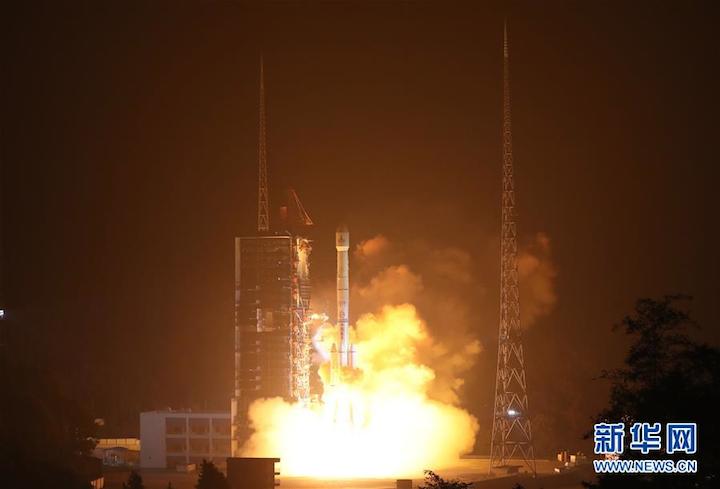
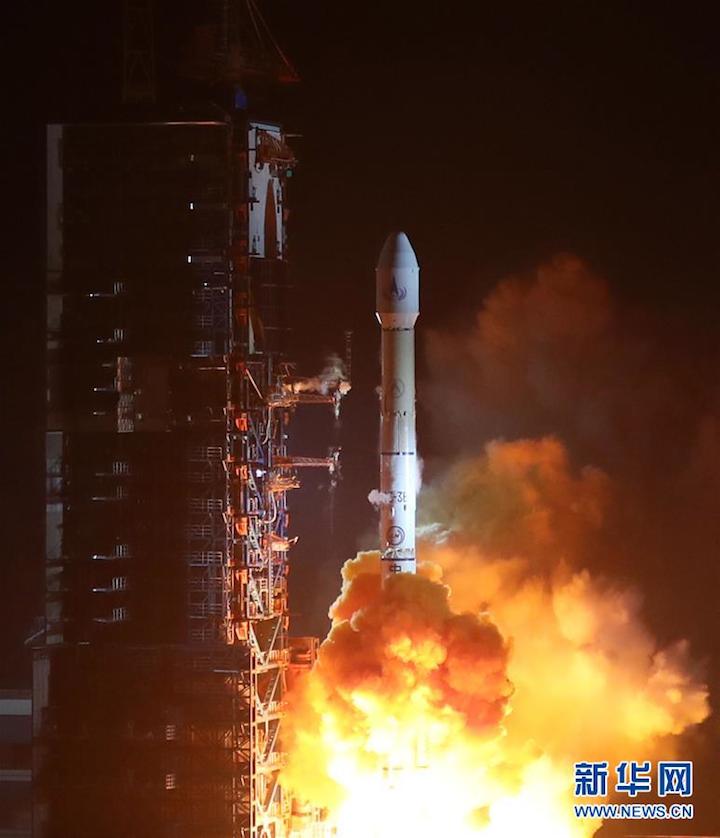
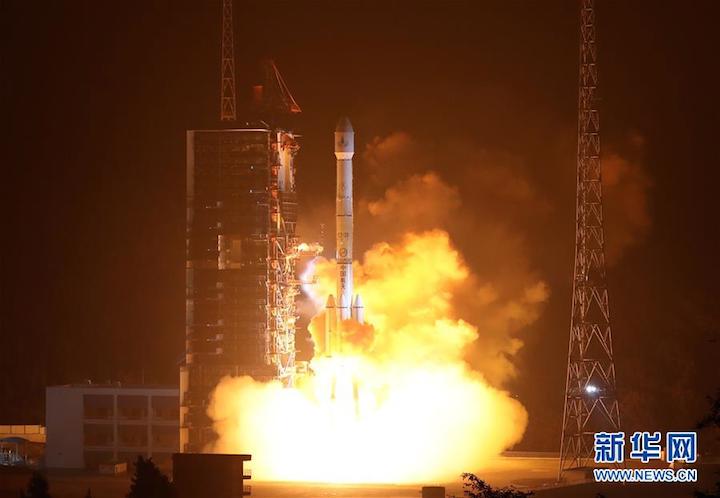
Quelle: Xinhua
-
Update: 22.12.2016
.
|
The Long March-2D rocket carrying a carbon dioxide monitoring satellite blasts off from the launch pad at the Jiuquan Satellite Launch Center in Jiuquan, northwest China's Gansu Province, Dec. 22, 2016. This was the 243rd mission of the Long March series rockets. Besides TanSat, the rocket also carried a high-resolution micro-nano satellite and two spectrum micro-nano satellites for agricultural and forestry monitoring. (Xinhua/Ren Hui) JIUQUAN, Dec. 22 China launched a carbon dioxide monitoring satellite via a Long March-2D rocket from Jiuquan Satellite Launch Center in northwest China's Gobi Desert at 3:22 a.m. Thursday. China is the third country after Japan and the United States to monitor greenhouse gases through its own satellite. The 620-kg satellite TanSat was sent into a sun synchronous orbit about 700 kilometers above the earth and will monitor the concentration, distribution and flow of carbon dioxide (CO2) in the atmosphere, said Yin Zengshan, chief designer of TanSat at the Chinese Academy of Sciences micro-satellite research institute. The satellite will help understanding of climate change and provide China's policy makers with independent data. On a three-year mission, TanSat will thoroughly examine global CO2 levels every 16 days, accurate to at least 4 ppm (parts per million). This was the 243rd mission of the Long March series rockets. Besides TanSat, the rocket also carried a high-resolution micro-nano satellite and two spectrum micro-nano satellites for agricultural and forestry monitoring. FIRST-HAND DATA The concentration of CO2 in the atmosphere has increased from 280 ppm to 400 ppm over the past 150 years, leading to an increase in average global temperatures of about 0.7 degrees Celsius over the last century, according to Lu Naimeng, TanSat chief scientist. The new satellite will enable China to obtain emissions data first-hand and share it with researchers worldwide, Yin said. The Paris Agreement on climate change came into force on Nov. 4, with more than 100 countries committed to reducing their carbon emissions. The satellite can trace the sources of greenhouse gases and help evaluate whether countries are fulfilling their commitments. TanSat means a louder voice for China on climate change, carbon reduction and in negotiations with a bigger say on carbon trading. Research on the CO2 flow will improve understanding of the carbon cycle, generate more accurate and reliable predictions of climate change. China's CO2 emissions are to peak around 2030, with emissions per unit of GDP cut by 60 percent of 2005 levels by the same date. A national carbon trading market will open next year. WORLDWIDE SCOPE Many countries are reducing emissions, but calculating how much they are actually doing is difficult. Ground-based monitoring cannot collect accurate data on a global scale, so satellites offer the best means of measuring CO2. Japan and the United States have their own monitoring satellites, but two are far from enough to assess the whole world. "Since only the United States and Japan have carbon-monitoring satellites, it is hard for us to see first-hand data," said Zhang Peng, TanSat application system commander and vice director of the National Satellite Meteorological Center. "Before, all our data came from ground stations. That kind of data is both local and limited, and does not cover the oceans," Zhang said. "The satellite has worldwide scope and will improve data collection. Observing atmospheric CO2 by satellite demands cutting-edge technology, so TanSat is a major technological achievement for China," Zhang said. "We hope TanSat will work with carbon-monitoring satellites of other countries and provide ample data for studying climate change," said Li Jiahong, chief engineer of the National Remote Sensing Center. Researchers took almost six years to develop TanSat and its high-resolution CO2 detector. "The TanSat has very good "vision," and can distinguish changes in atmospheric CO2 as small as 1 percent," said Yin. Cloud and aerosol detectors minimize interference, making observations more accurate. The satellite has different modes for observing oceans and land, and can constantly adjust its orientation and position. To ensure the accuracy of TanSat, six ground-based observation stations will calibrate and examine observational data. "We can now collect carbon data from all over the world, all year round, and record the carbon contributed by both developed countries and the developing countries," said Lin Chao who was involved in developing the detectors. "As for China, we can have detailed analysis on emissions in different regions, provinces and cities, thanks to the satellite," said Lin. -
Quelle: Xinhua |








